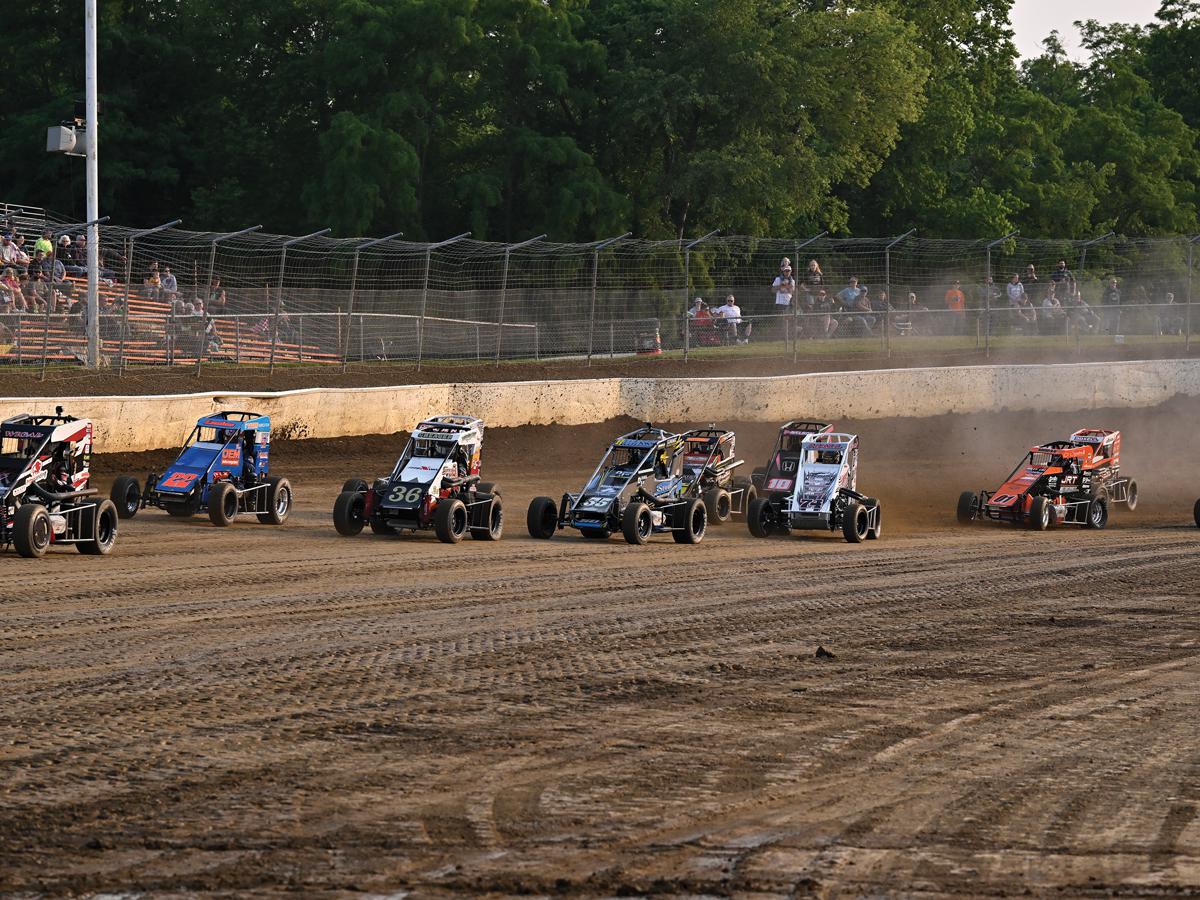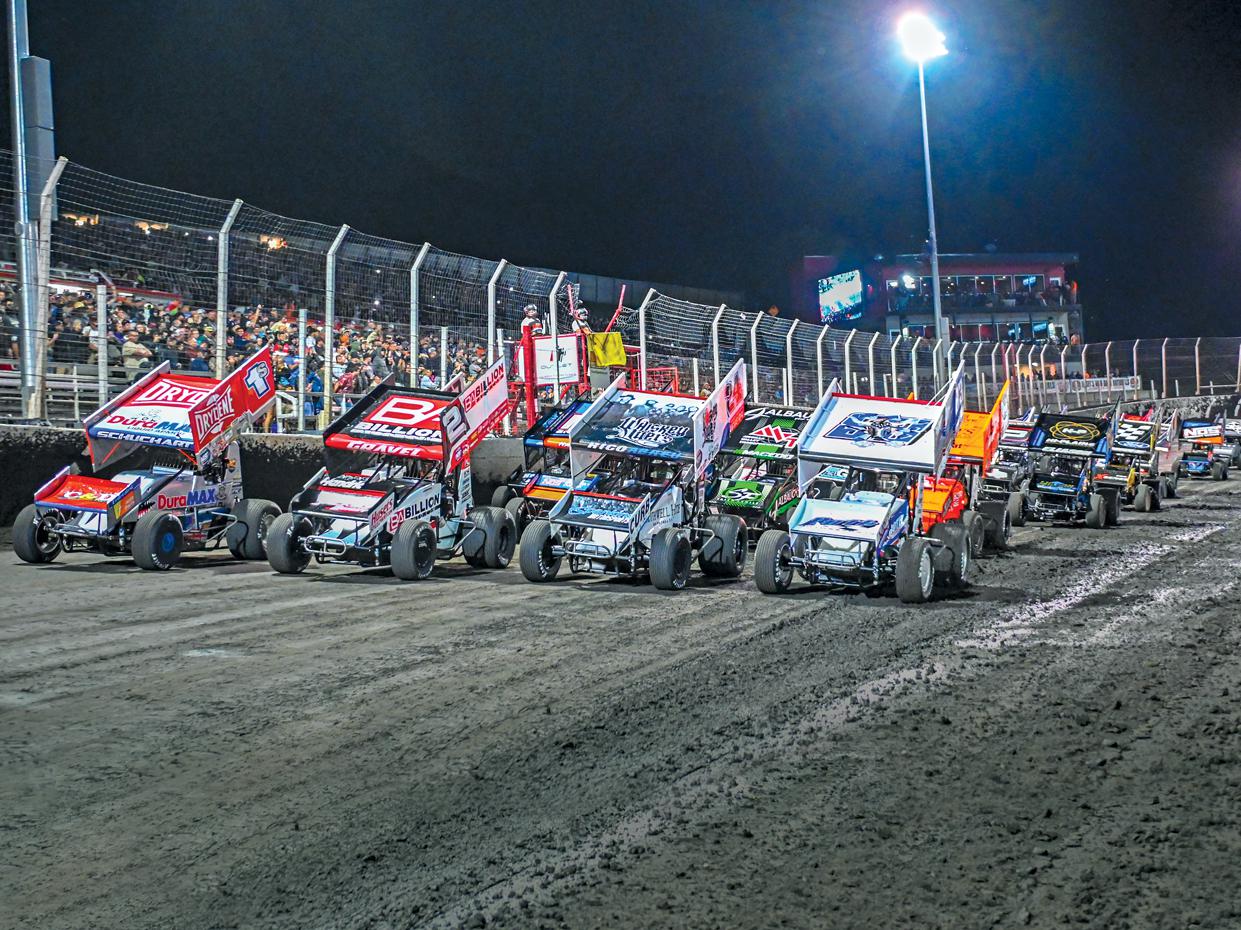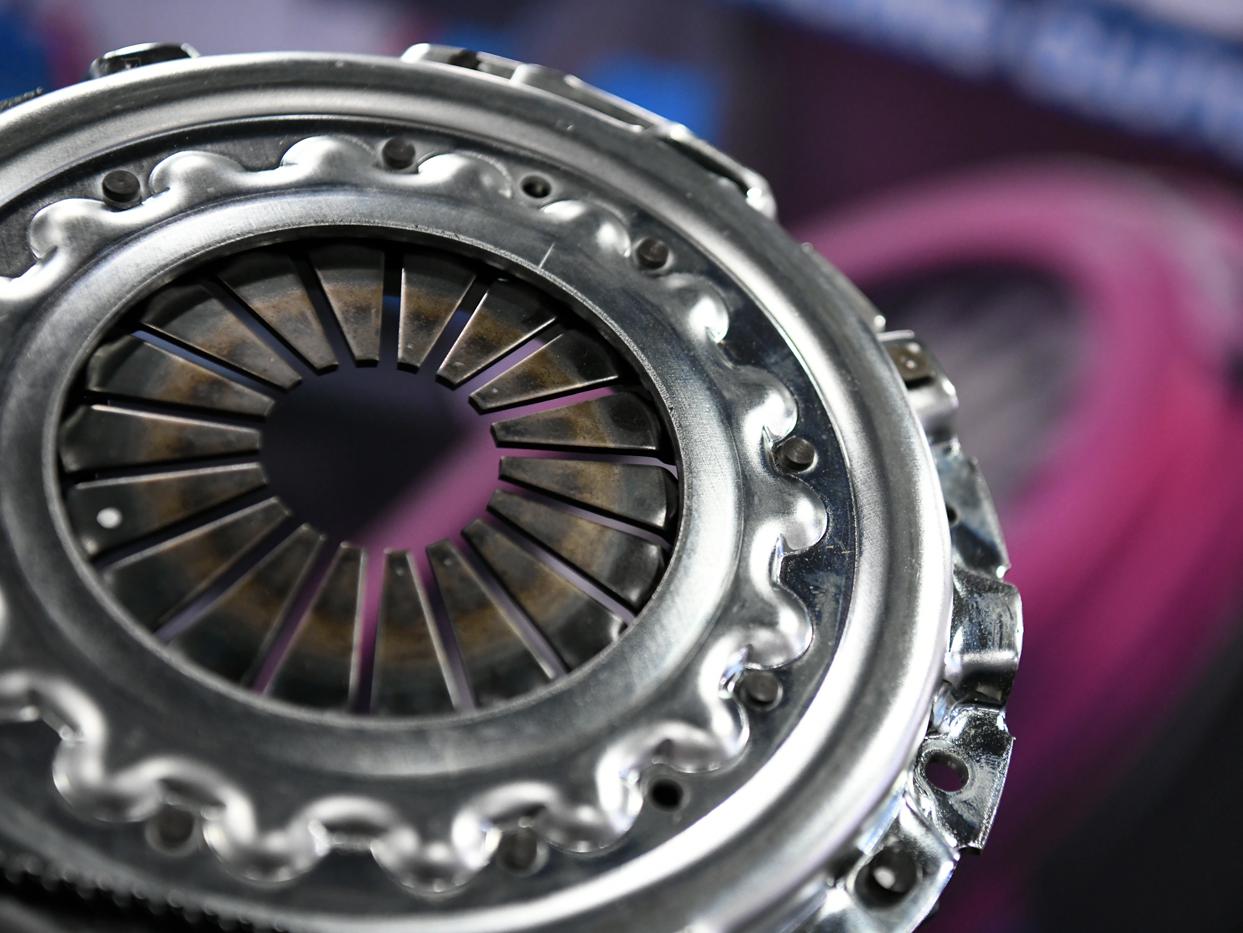PRI Show Report: Pole Position Tech
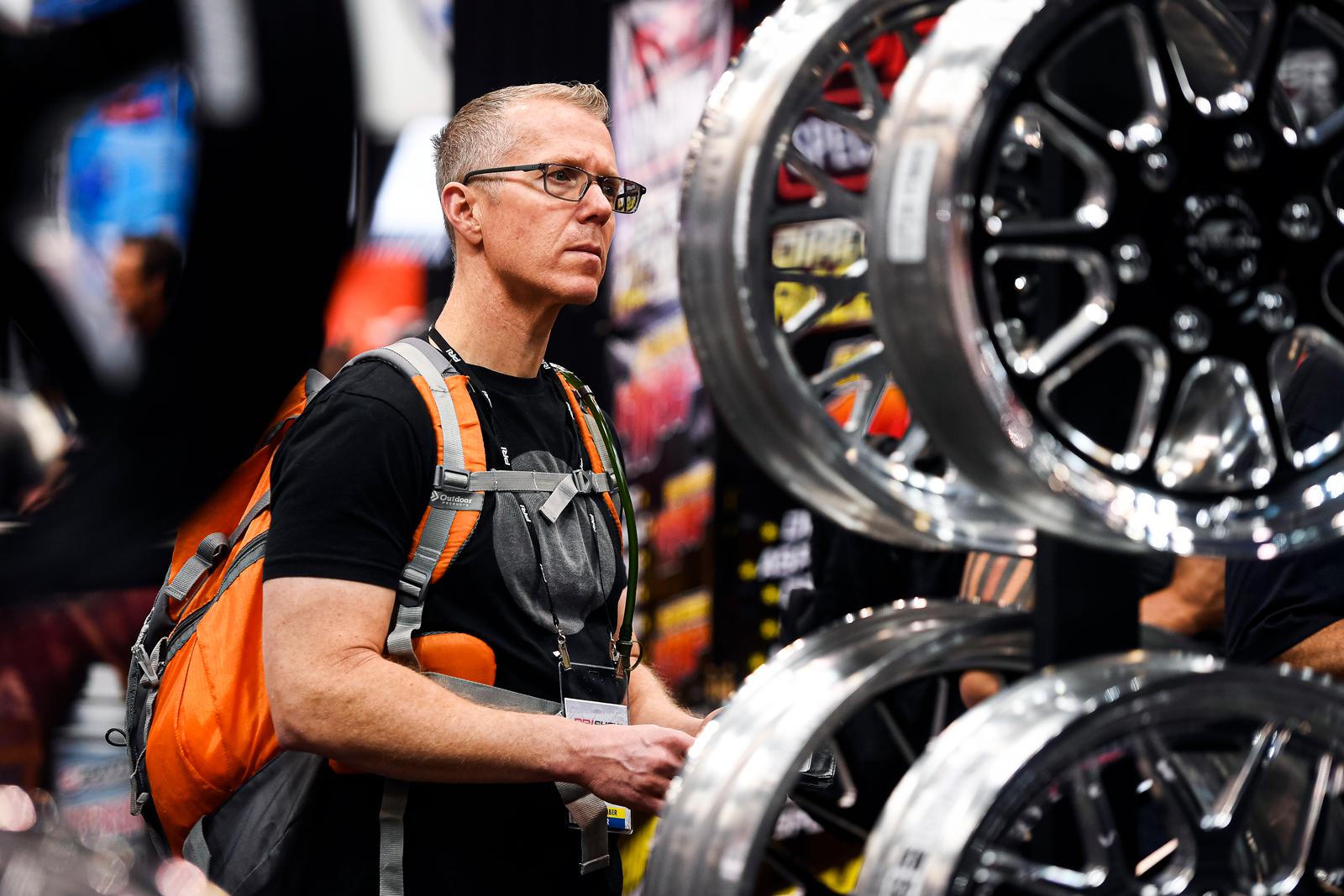
With a cautious eye toward the 2024 season as the economy recovers and the election looms, the racing aftermarket released cutting-edge innovations, timely product upgrades, and expanded applications at the PRI Show.
While the 2023 PRI Show offered valuable networking opportunities along with informative educational forums, new performance products have always been the backbone of the event—and a big lizard appeared to be stimulating much of the parts development as the racing industry readies for a new season of competition.
It seemed as if one couldn’t walk down any aisle inside the Indiana Convention Center and Lucas Oil Stadium without bumping into some type of product designed for the Ford 7.3-liter V8 known as the Godzilla engine.
Here’s just a small sampling of new parts discovered for that powerplant while strolling among the 1,000-plus exhibitors: eight-stack EFI from InnoV8, front cover from Late Model Engines (LME), bellhousing to support Tremec transmission from Lakewood, high-mount front drive system from Holley, bolt kits from ARP, lifters from Isky, Magnum crankshaft from Callies, cam phaser lockout and conical valve springs from COMP Cams, CNC-ported cylinder heads from Livernois Motorsports, intake manifold from Edelbrock, performance bearings from King Engine Bearings, supercharger from Harrop Engineering, and steel rocker arms from Jesel.
Although the Godzilla platform garnered more than its share of headlines, the engine doesn’t seem to be in a lot of race vehicles at this point. Most of the excitement is currently focused on muscle car and street rod swaps; however, that perspective will change soon.
“There will be more racing applications coming for Godzilla,” said Bryan Neelan at LME, Houston, Texas. “It just needs to be supported by more guys like us.”
“It’ll be more like the LS sooner or later,” added Nolan Jamora of Isky Racing Cams, Gardena, California.
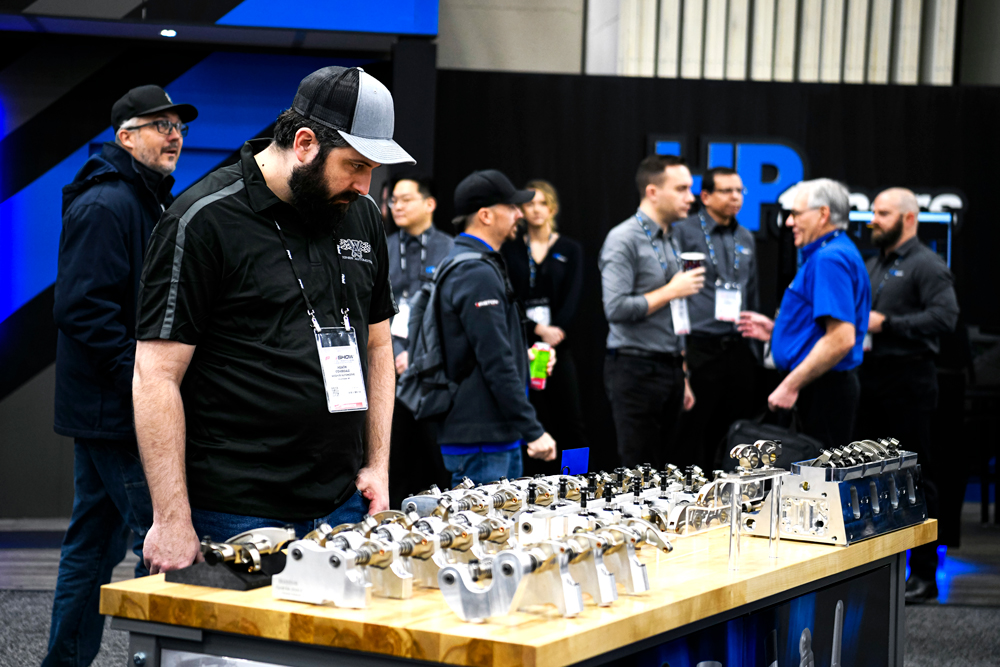
Other potential racing innovations on the horizon were showcased at PRI, including new EV components, alternative fuels, and simulator racing. There was even a proposed concept for a new type of turbine engine called the Tomahawk TX from Xcentrick Innovations in Brookings, South Dakota. Projected horsepower was 7,500 at 12,500 rpm while weighing less than 200 pounds. A working prototype has yet to be built; nonetheless, the design theory of a combined-cycle centrifusion turbine with an afterburner drew a good deal of curious attendees to the presentation video.
Across the hall there was a new engine that is ready to race. Katech Engineering of Clinton Township, Michigan, unveiled its new 2.7-liter billet inline-four engine designed for midget racing. The cylinder block dimensions are based off a GM LT engine, and it features a Katech CNC-machined LT cylinder head.
“We designed and developed this engine completely in-house,” said Kennan Moffitt. “We’ve made 375 hp on methanol. And since every ounce counts, we made it as light as possible at 168 pounds.”
For this engine, Katech blocked off the direct-injection ports on the LT head and adapted a traditional Kinsler fuel-injection system. Yet the engine is designed so that a pair of high-pressure fuel pumps can be mounted on the block and run off the camshaft to provide enough fuel for DI.
“Our purpose was to get it in the Xtreme Midget Outlaw series, but you can do whatever you want with it,” added Moffitt. “It’s capable of on-road applications. We’ve heard guys joke around that they’d like to put it in their Miata.”
The Katech engine is an encouraging example of renewed R&D in the performance aftermarket following the pandemic when many development projects were put on hold. Product demand soared during that time, while manufacturers battled supply chain challenges, higher materials costs, and labor shortages. When those problems were finally sorted out, companies channeled more time and money not only into development but also getting the manufacturing operations up to speed. Sometimes the delay allowed for additional improvements. Two years ago, Dart Machinery in Warren, Michigan, showed off a prototype Mopar Gen III Hemi Iron Eagle block that came standard with 7/16-inch head studs.
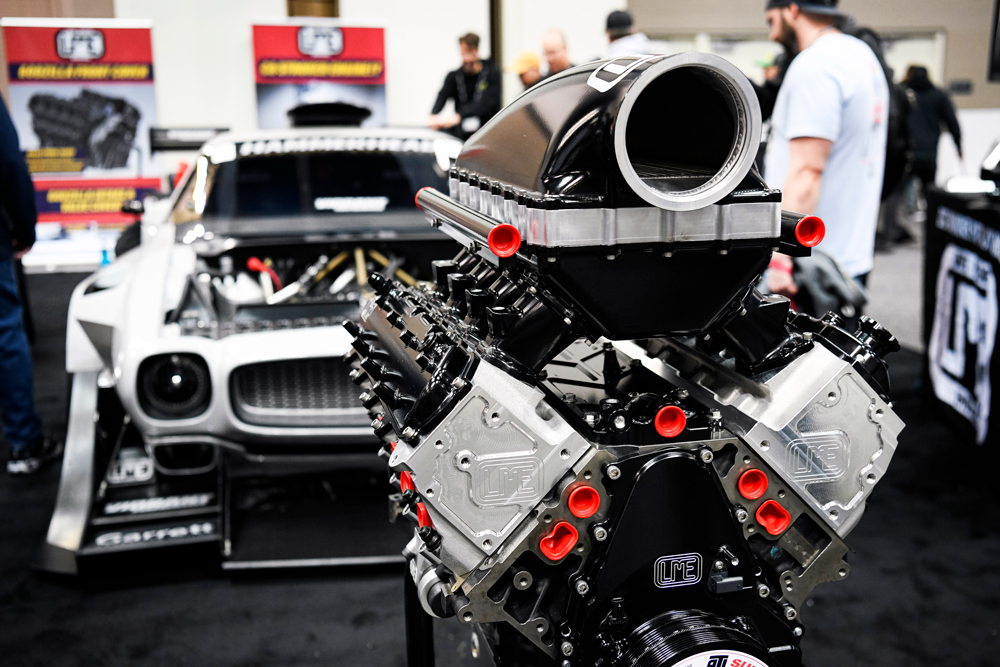
“Now we can offer an upgrade to half-inch studs,” said Nick DiBlasi, showing off the orange powder-coated production version. Other features of the block include steel four-bolt main caps, priority main oiling with two lifter crossovers, scalloped water jackets that allow more coolant, and 5/8-inch-thick decks.
“This block is for the guys really pushing limits on the OEM blocks, guys with power adders,” added DiBlasi. “This is a clean-slate approach. We’re fixing a lot of the shortcomings of the factory block.”
Another new Dart Iron Eagle offering is based off the Toyota 2JZ architecture. It also features Siamese cylinder bores, extra-thick decks, 11-mm or 1/2-inch head-bolt holes, revised oil-passage locations, and scalloped water jackets.
“We’re also working on a cast-aluminum version,” said Brandon Abidin. “This block will be used in everything—obviously a lot of drag racing but also drifting, Time Attack, and a variety of applications.”
The Dart iron 2JZ block is a fresh option in a segment where high-priced billet blocks or considerable machine work on a factory block were the only alternatives.
“This casting solves every issue,” said Abidin. “To me, this could be the next LS swap for people who aren’t LS savvy. I think you’re going to see a lot more guys adopting this engine.”
Addressing a void in the market is certainly one approach that’s driving new product development for racers, as are new engine and vehicle applications from the OEMs. Changes in sanctioning body rules will also spur development. Then there are new forms of competition that get manufacturers excited.
“Racers are asking for a lot of drag-and-drive stuff these days,” said Jamora at the Isky booth. “A lot of people are getting into that because there are so many classes. You can run cars from a 14-second daily driver up to 8 and even 6 seconds. They can go on any budget to run these cars.”
Since reliability is a key factor in building a drag-and-drive engine, Jamora recommends Isky’s bushed lifter, “because you have cars that run 7s and 6s, yet they need to idle and drive 150 miles in traffic. So it’s a true test of what the lifter can do. We’re the only one that does a bushing hydraulic roller. We have the fastest LS running in the 6s with a hydraulic roller.”
Boost Drive
One industry trend that continues to flourish is boost. Driven by the demand for 1,000-plus-hp street engines along with the continued growth in outlaw and small-tire classes, plenty of new superchargers and turbochargers were shown at PRI.
“These are our Next Gen turbochargers, and they’re at least 10% better in terms of airflow than the previous design,” noted Reggie Wynn of Precision Turbo & Engine, Crown Point, Indiana. “Basically, you have the same size but more efficient.”
Slowly, more rules and class designations are coming into the once wide-open world of outlaw racing.
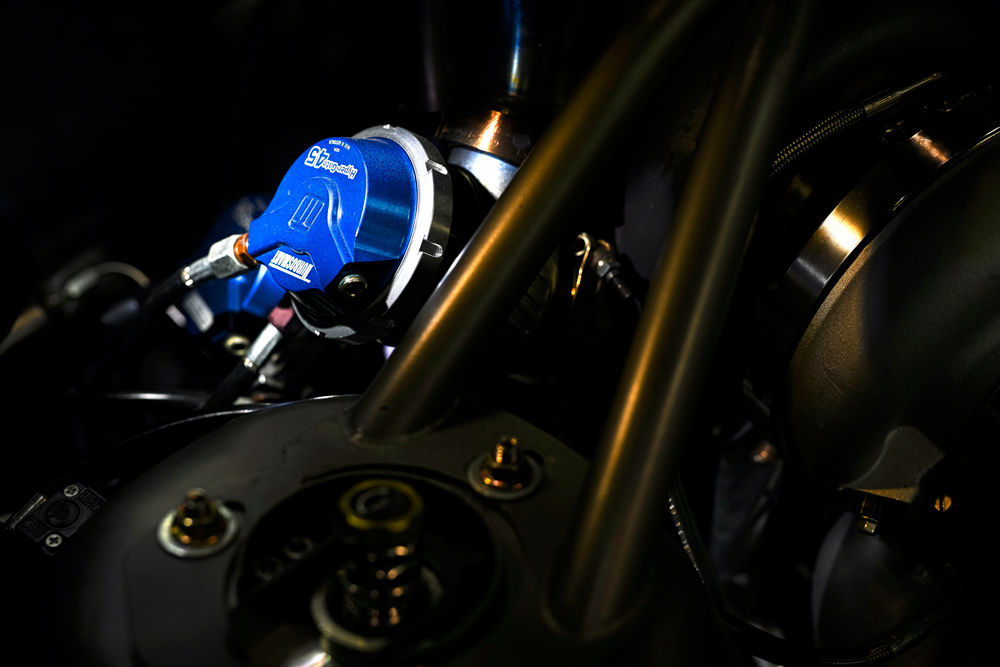
“We designate a lot of our turbochargers that are constrained by rules with an ‘R.’ That means it’s a class-specific turbocharger. For example, this 6470 is legal for the Mean Street class at the World Finals,” said Wynn, noting all R units will have an integrated speed sensor for data acquisition. “For us, this Next Gen Technology has been a game changer. We’re able to achieve more horsepower with less boost. That means the shaft speeds are lower, and you’re not working the turbo as hard as you had to in the past, which can introduce back-pressure issues.”
Controlling boost has also become a critical issue. Turbosmart USA, based in Ontario, California, showed off its line of new electronic StraightGate external wastegates that are available in different sizes. The idea is to offer the engine builder and tuner more control over boost pressure.
“Precision and total control,” emphasized Marty Staggs. “With our newer generation of products, we’re directly controlling the power management in a way that has never been done before.”
The traditional pneumatic wastegate will not go extinct, according to Staggs. But the electronic models will provide the accuracy that leading tuners need for competitive runs.
“You’re controlling manifold pressure directly: this much boost at this point in the run,” explained Staggs. “Ideally, the turbo is spinning at its optimum shaft speed, so you get peak efficiency, peak performance, and full control over the power of the engine.”
Turbosmart offers a wide array of boost-control products, sometimes begging the question if there’s a need for such diversity.
“We’re in all forms of motorsports, from jet skis to Reno air-race planes, and we don’t know what our customer is going to end up doing with our product,” said Staggs. “If you have forced induction, we have something for you, whether it’s turbocharged or supercharged.”
Over at ProCharger, the Lenexa, Kansas-based company displayed its wide range of centrifugal superchargers, but the main attraction was a new line of modular accessory drive kits.
“For LS, LT, small and big block Chevy, we have an accessory drive that you can start out with just the water pump and alternator. Then you can add AC, you can add power steering, and you can add a ProCharger in steps,” explained Grant Jones. “Or you can do it all at once. We’ve had guys successfully support 1,600 hp with it.”
For hardcore racers, Jones said the biggest ProChargers are helping make 4,500 hp, and he’s seeing a wider range of motorsports drawn to boost applications.
“We’ve got blowers that will support more power than what most of the racers are wanting at this point. You’re starting to see a lot more road race, drifters, and even mud trucks with blowers. The same principles that work for drag racing can apply to slick mud surfaces,” said Jones. “Road racing is also growing. A ProCharger runs cooler than other types of forced induction.”
Investing In Machinery
Boost is certainly the key factor in the massive performance increases made in the diesel community. Helping those engine builders are more tuning controls and more data to make better decisions about modifications.
“Every year we’re getting more and more diesel guys with inquiries about engine dynos,” said Shawn Kell of SuperFlow, Sussex, Wisconsin. “In my opinion, that’s a very underserved industry. There just aren’t enough dynos in diesel shops.”
Handling the massive torque of a diesel engine is the main challenge for any dyno. The Black Widow is a diverse model for high-horsepower engines, but the sales team would enjoy seeing a dual-brake version.
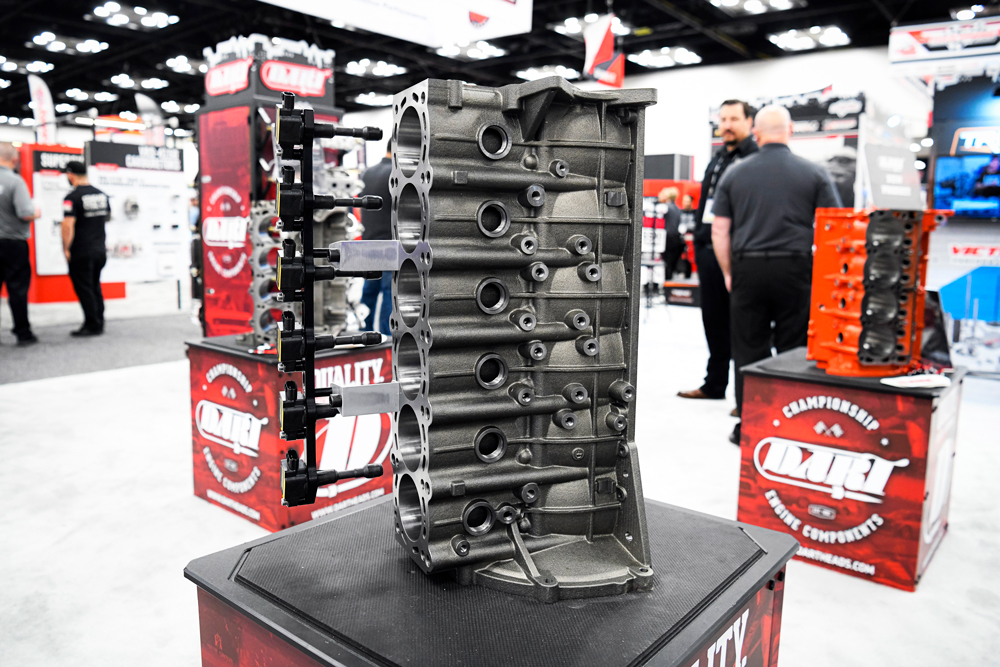
“Brandon Hart [Hart’s Diesel] has combined two of our Black Widow brakes,” said Kell. “We helped him with the valve-control strategy. He’s done the majority of the work, and we’re excited to see what it’s going to do. Hopefully, we can convince our engineering team about it, but we’ll see what the future holds on that.”
At the Show, SuperFlow released its WinDyn5 software that provides direct real-time access to all subsystems with sophisticated screen displays on up to four monitors. There are more than 500 user-configurable channels. “This software is network friendly, which is very popular with our customers,” added Kell.
Machinery Row is always a big draw at PRI as attendees drool over the latest in high-tech CNC machines as well as traditional metal-shaping hand tools. Mazak unveiled the VC EZ 20X, a four- or five-axis-capable machine with a 15,000-rpm spindle speed. Even with cutting-edge technology built into today’s CNC machines, Paul Robinson said Mazak’s top priorities are often training and support.
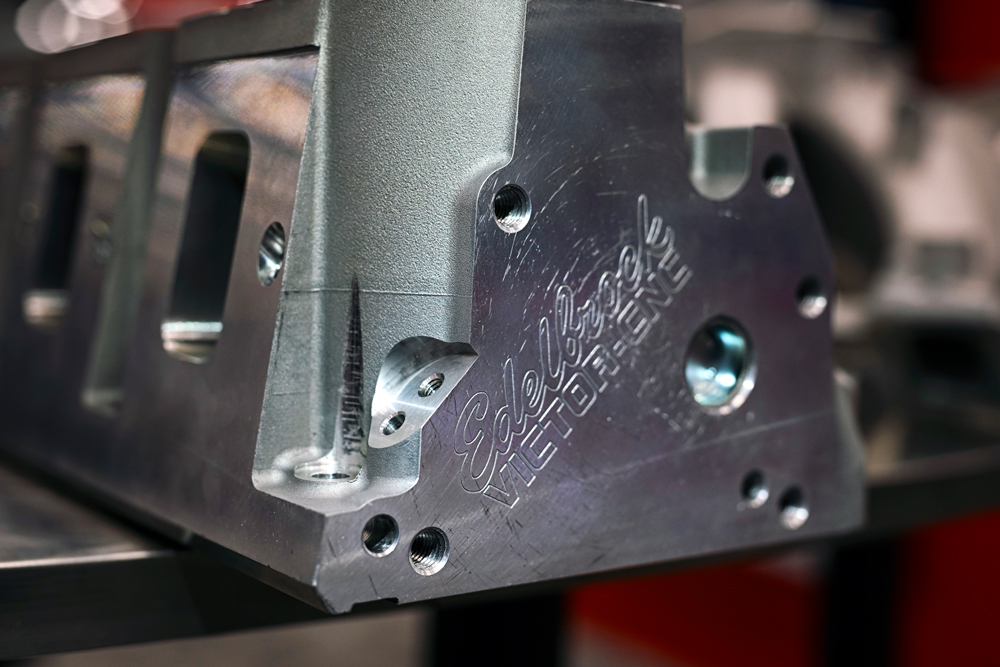
“We do training on different levels. We can do the full turnkey support for them, or we can give them the basics and they can do it on their own,” said Robinson. “What Mazak does better than anything is we have the best service and parts inventory. We’re there to support the customer long term.”
Exploring New Markets
As companies gear up their R&D efforts, they’re often looking at new markets for their products. Borowski Race Engines in Rockdale, Illinois, was specializing in the LS engine until the pandemic hit and supply chain problems changed the shop’s dynamics.
“We were motivated to expand into other platforms, like the big block Chevy,” said Joe McCaul. “We’re also seeing new opportunities in off-road, like sand buggies and air boats. We’ve found a big market in Iceland, especially with Formula Off Road.”
“We’re seeing big growth in off-road,” concurred Zeke Urrutia at Ferrea Racing Components, Fort Lauderdale, Florida. “Side-by-sides are really big for us now. Some of these guys are spending $40,000 to $50,000 just on aftermarket parts for their vehicles.”
“We’re seeing more and more shows putting autocross into their events,” added Robert Florine of ARP, Ventura, California, which unveiled a number of bolt kits for the Godzilla engine in anticipation of more racers gravitating to that platform. “If they’ve got a drag strip, they almost always have an autocross.”
Over at Brian Tooley Racing, the Bardstown, Kentucky-based company has invested heavily in a Spintron and advanced engine modeling software to design its latest camshafts for the Gen III Hemi. “We were able to run hundreds of iterations of lobe designs,” said Brian Tooley, who added that it was necessary to purchase his own cam-grinding machine after he developed a breakthrough formula a couple of years ago.
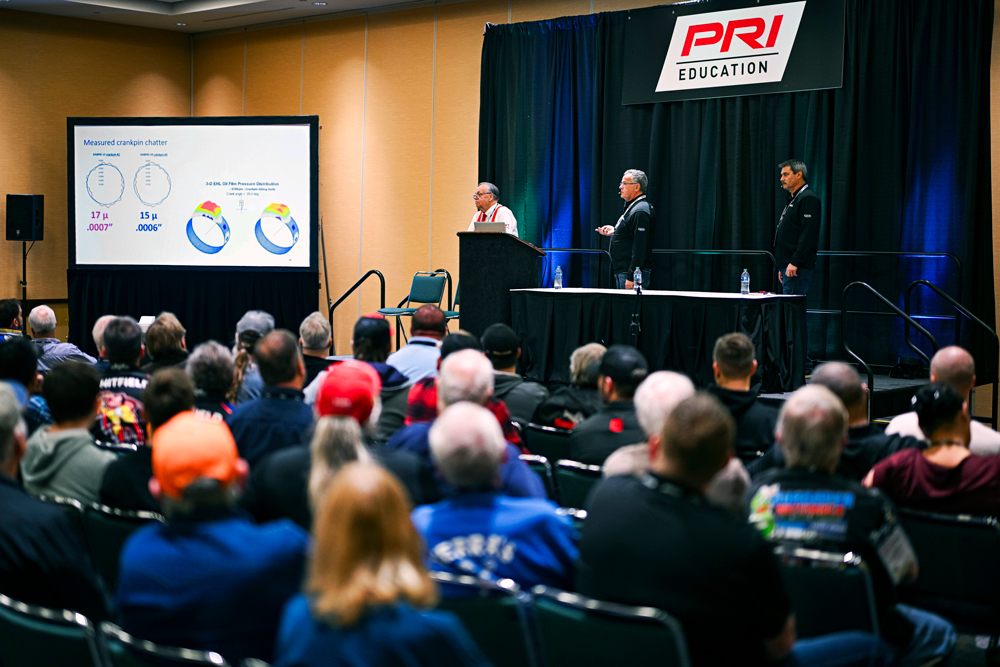
The Gen III Hemi continues to be a popular foundation for new parts development. Edelbrock of Olive Branch, Mississippi, showed off its new Victor heads that are full CNC ported and come with copper seats for those racers using titanium valves. “We raised the intake ports an eighth of an inch,” said Jamie Wagner. “This head will be six-bolt capable when those blocks become available.”
Edelbrock also displayed the Victor CNC 12-degree six-bolt cylinder head for LS7 engines. They come with .220-inch raised intake ports and .100-inch raised exhaust ports. There’s even a version with provisions for mechanical fuel injection into the intake ports. “We’ve been trying to get approval from various sanctioning bodies to use this in 410 sprint cars,” added Wagner.
Finally, one of the more compelling trends or themes drawn from the 2023 PRI Show is the drive for more precision in engine building. Brad Lagman of QMP Racing in Chatsworth, California, developed the MC-1 measuring center because traditional methods of taking piston, lifter bushing, or bearing measurements were inconsistent.
“If I gave a piston and micrometer to 19 different guys, I’d get 19 different sizes,” said Lagman. “Now I have youngsters in the shop, and they can measure parts like a seasoned pro with the MC-1. We can isolate bad parts before they get into the assembly room.”
Precise measurements are the key to unlocking hidden horsepower these days, according to many engine experts.
“We keep trying to make more horsepower per cubic inch. If we refine the engines, our margin of error gets smaller and smaller and smaller,” said Lake Speed Jr. of Total Seal, Phoenix, Arizona. Speed was part of an educational seminar on metallurgy and surface finish along with racing consultant Billy Godbold and Ben Strader of EFI University. “If you want to climb higher, you’re going to have to measure things more precisely, because as Ben says, you can’t manage it if you can’t measure it.”
Another seminar emphasizing precision was led by Randy Neal of CWT Industries of Norcross, Georgia, joined on-stage with Dan Begle and Kimm Karrip of MAHLE, Farmington Hills, Michigan. Neal reminded the attendees that motorsports is an evolving industry, and the only way to move forward is to improve accuracy.
“If you can’t measure it, you don’t know—you’re just guessing,” said Neal. “If you’re really going to the next level, technology is the only asset available to you. It used to be in Cup racing we had to go 501 miles to win. Now they’re building engines that can go 20,000 miles. It’s amazing where we’ve evolved.
“But the path is clear. If you think you can beat technology, that’s a losing bet,” summed up Neal. “All the low-hanging fruit of making horsepower, that’s gone.”
A Word From The Sanctioning Bodies
By most accounts, 2023 was a rewarding year for the majority of motorsports organizations. With the promise of additional races and new sponsorships coming to many venues—along with stable rules packages and expected higher car counts—there is an air of confidence that this year will be just as successful.
Safety, as always, is the primary concern of sanctioning bodies. Last year, World of Outlaws in Concord, North Carolina, required on-board fire suppression for the first time.
“We have documented instances where it helped,” said competition director Tom Devitt. “Of course, with anything new, we had some issues that we had to work through.”
The biggest problem centered around the support clamps, but changes were made to ensure proper mounting. New SFI specs were written that take into consideration a sprint car’s weight, fuel, and packaging. As for new product under consideration, Devitt said the series is looking at new fuel injection and cylinder heads presented by the aftermarket. Also, two companies are working on cylinder blocks, as current product is in short supply.
Over at the NHRA in San Dimas, California, drivers in cars running faster than 150 mph at any distance will be required to wear a SFI 38.1 head-and-neck restraint.
“For a lot of years, a neck collar was used, and many thought it was for protection. But mostly the neck collar was used for flame intrusion at the bottom of the helmet,” explained Lonnie Grim, national tech director, noting the rule will impact categories like Super Gas and Super Comp. “We looked within our licensed categories of how many participants this covered, and it’s a significant number. This is one of the biggest moves NHRA has made in a long time due to safety.”
Following the introduction of Factory X last year, Grim said NHRA will be reviewing Factory Showdown and Factory X in early 2024 to see if any performance adjustments will be needed for the season. “Obviously, our Factory X category would love to go faster, and at some point, they will,” he said.
Last year was the 10th anniversary of the PDRA, and record car counts were set with a race average of 320 vehicles across eight events. For this year, Redline Oil became the first title rights sponsor. “Partnering with Redline takes us to a higher professional level and gives us a stronger hold in the market,” said series director Tyler Crossnoe. “Classes are staying the same, but payouts are going to be increased.”
PDRA events are focused mostly in the East; however, westward expansion is on the table. “I would like to get a little bit closer to home [Tennessee], but I know that’s a couple years down the road,” added Crossnoe. “It’s finding the tracks and seeing what works for the racers. It might be two divisions and running a true World Finals. We’ve been looking at multiple options.” —Mike Magda
 MEMBERSHIP LOGIN
MEMBERSHIP LOGIN JOIN PRI
JOIN PRI
